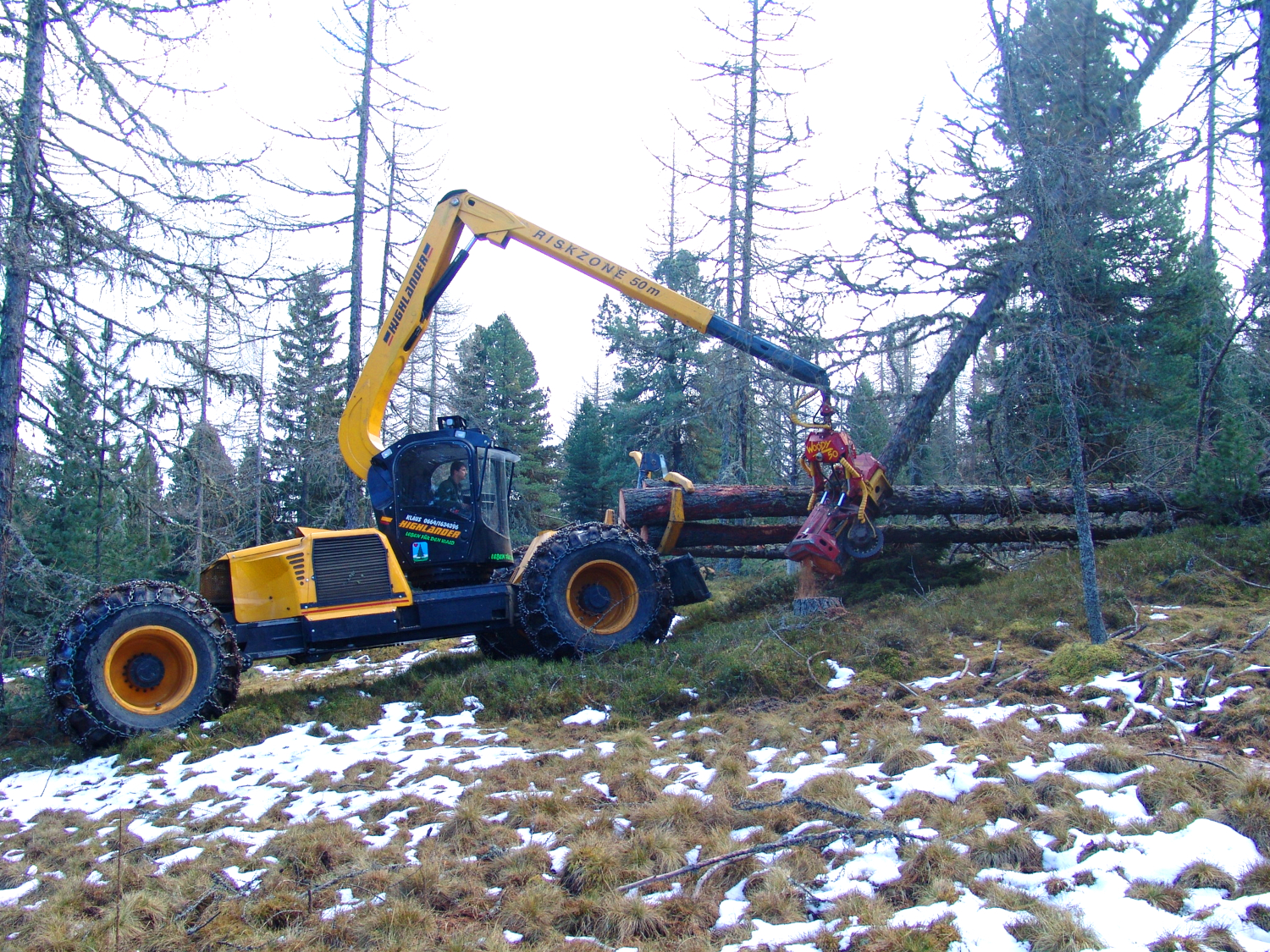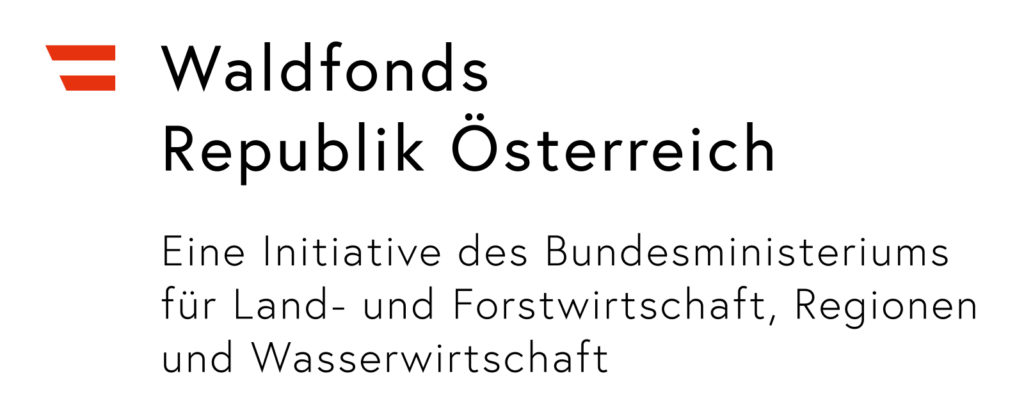Better harvesting with the right technology

Mechanised forestry makes management much easier, but not every harvesting method is suitable for all sites. The HOBO project makes the various possibilities and their aptitudes visible.
Mechanisation of forest management is of great importance for the sustainable provision of the renewable resource wood. The coordination of the technology with the ecological framework conditions is decisive for the care of the utilisation. The particularly productive, often “heavy” soils of the “flysch” and “molasses”- zone are susceptible to compaction and therefore represent a challenge for mechanisation.
The compaction of soil caused by driving with heavy equipment results in changes in its structure. Less water penetrates the ground, which means that not enough of it is available to the plants. The soil air balance and the water balance of the entire ecosystem are disturbed.
Seeing connections
Site properties such as the ability of the roots to penetrate the ground, tree species suitability, productivity, but also other functions such as the source and sink effect of the soil for greenhouse gases or the habitat function for organisms are closely related to its structure. A site-adapted use of technology is therefore a central basis of forest management on soils susceptible to compaction.
With HOBO, the University of Natural Resources and Applied Life Sciences (BOKU) and the Austrian Research Centre for Forests (BFW) are creating a database to better assess the effects of different timber harvesting technologies on endangered forest sites. This is of particular importance for silvicultural decisions in view of global warming.
Recommendations for practice
The water availability of the soil, which is controlled by the ratio of surface runoff to infiltration, water storage capacity and root penetration, is particularly relevant for the successional stand. Forest managers receive a practice-oriented decision matrix that clarifies the opportunities and risks of the various technologies in addition to the expected timber harvesting costs. The aim is to derive recommendations for action for the choice of the most suitable timber harvesting technology depending on location and weather conditions. Special Areas will be established for training and further education purposes.
The effects of different technologies will be investigated on the basis of documented timber harvesting operations of the last ten years and the utilisations carried out under controlled conditions during the project period under defined soil conditions (water content, soil frozen or not, etc.). The indicators allow a statement on the impact of different harvesting measures on soil functions, the remaining stand as well as regeneration. The HOBO project is funded by the Forest Fund of the Federal Ministry of Agriculture, Forestry, Regions and Water Management.
Project info
Project title: HOBO
Project title long: Forest Management in Climate Change – Safeguarding the Soil Functions of Forest Ecosystems through Site-appropriate Timber Harvesting
Duration: 01.03.2022 – 30.09.2025
Funding body: Austrian Forest Fund
Project management: University of Natural Resources and Applied Life Sciences (BOKU)
Project partner: BFW (Austrian Research Centre for Forests)
Participating institutes at BFW: Forest Ecology and Soil, Natural Hazards, Traunkirchen
Contact
Barbara Kitzler, Federal Forest Research Centre, Seckendorff-Gudent-Weg 8, 1131 Vienna, barbara.kitzler@bfw.gv.at
Link
https://dafne.at/projekte/hobo
